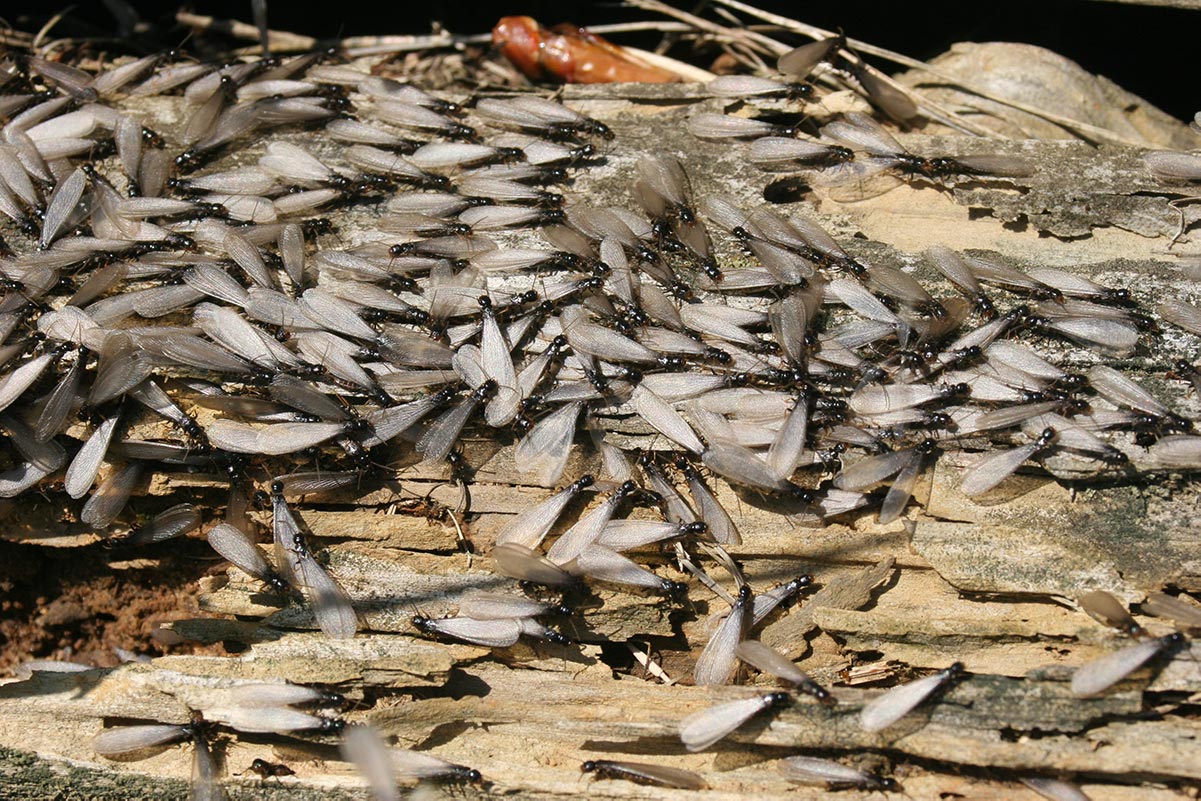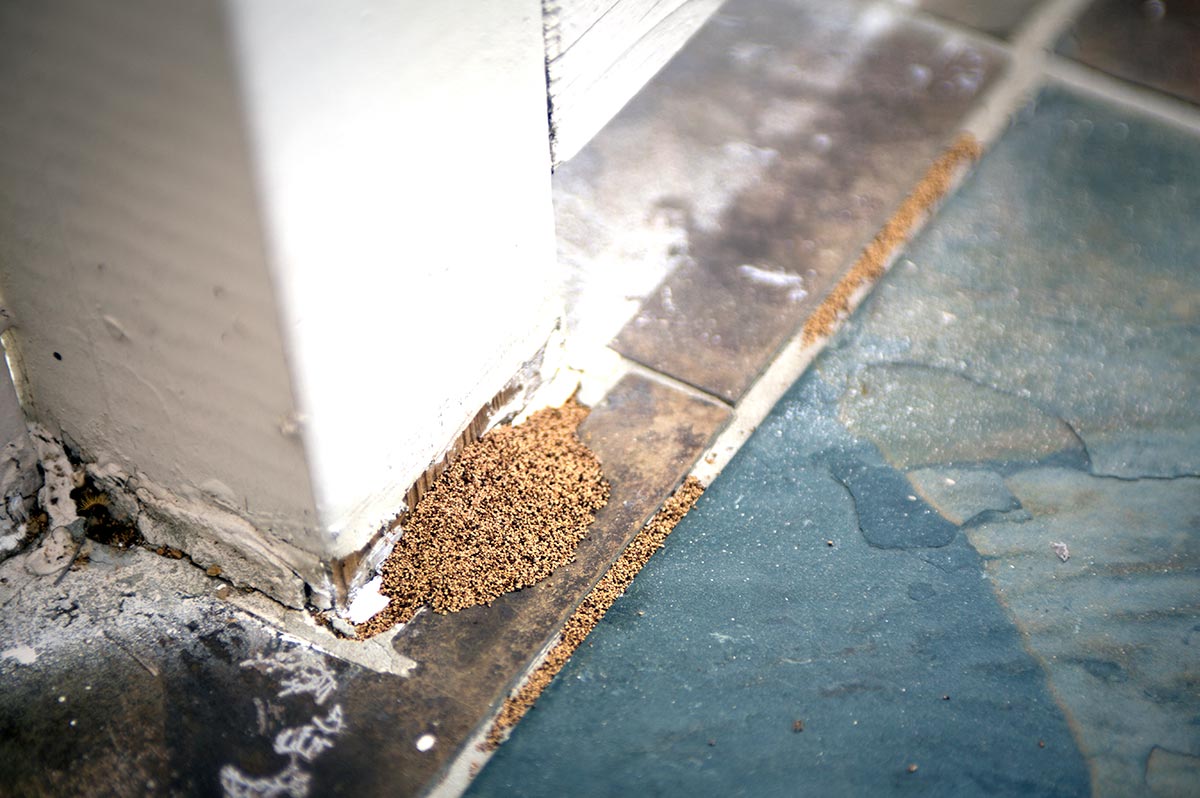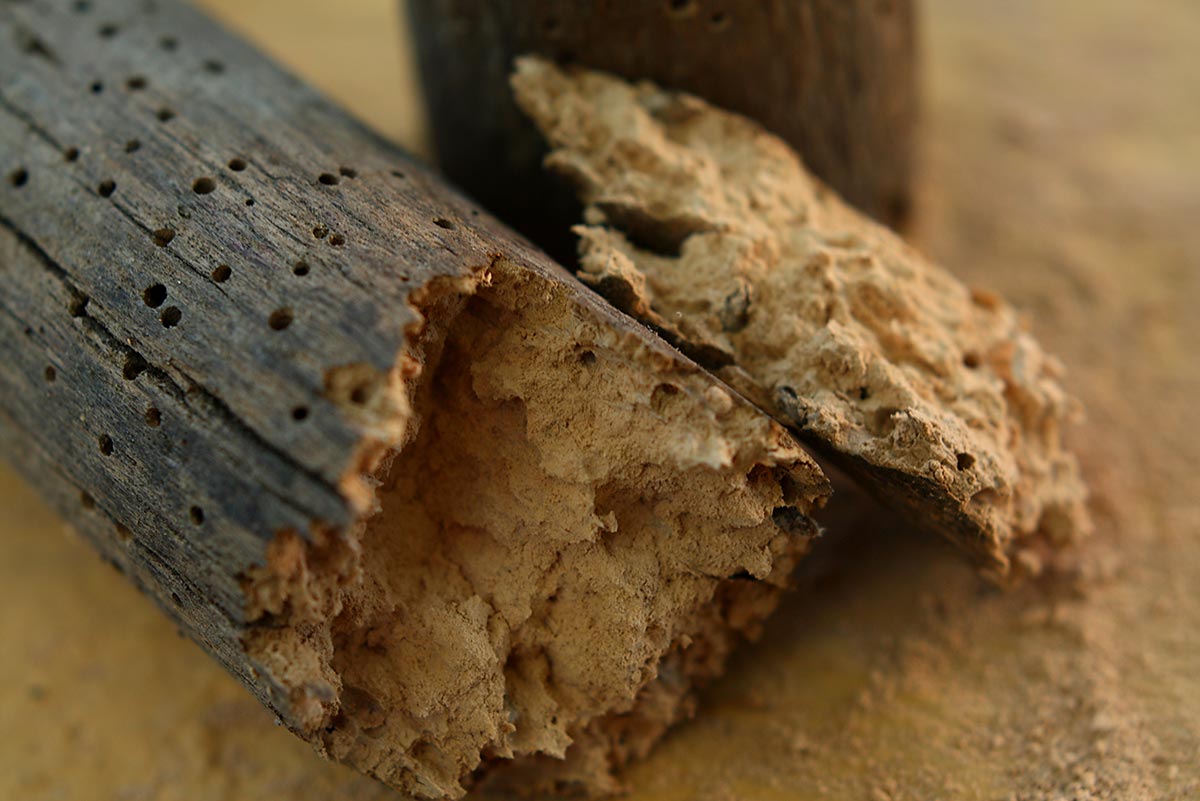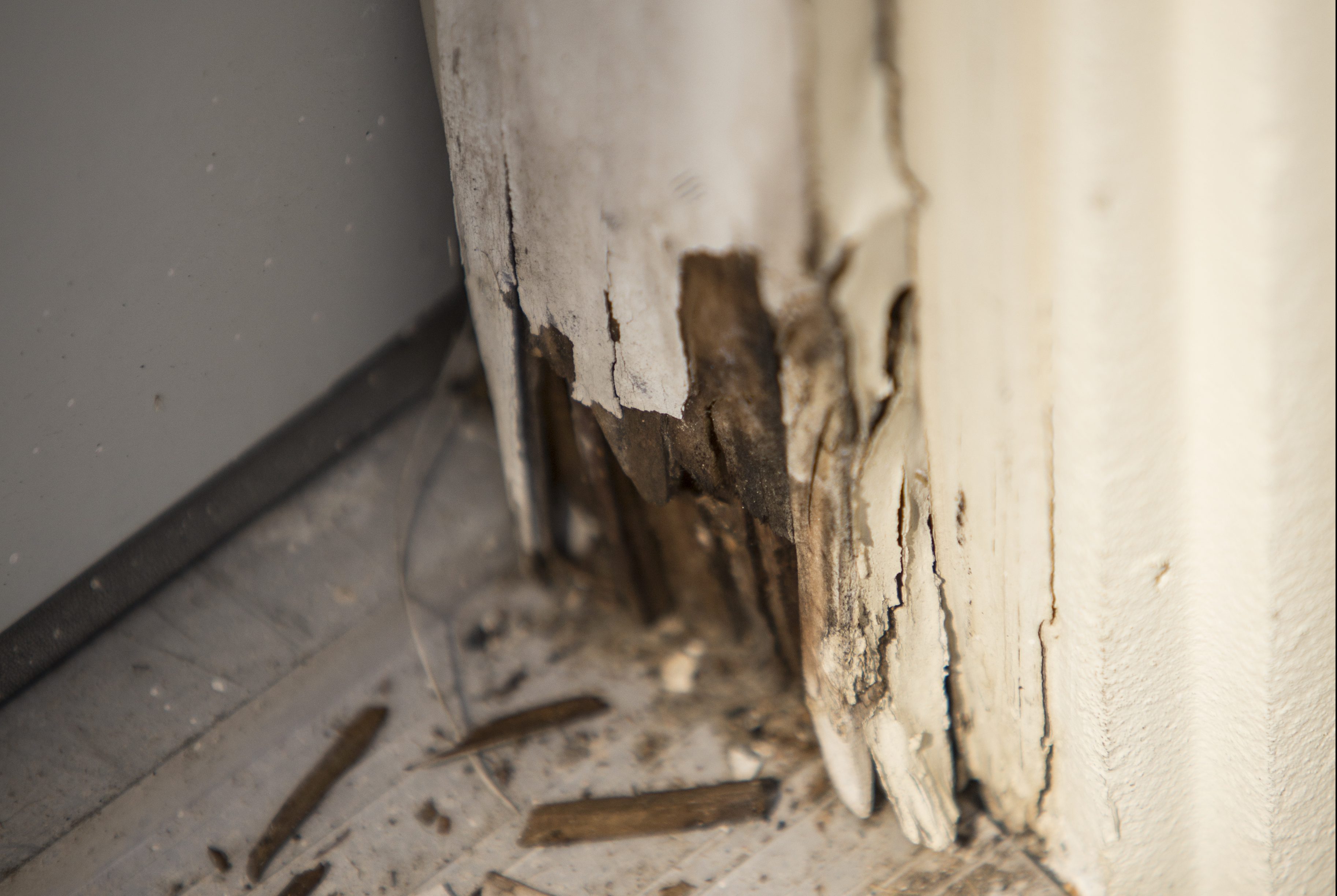Insect Identification
See something around the house and wonder what it is?

Subterranean Termites
This pest lives in the soil and enters structures though migration tubes made from mud. They build mud tubes from the ground up to wooden members and enter structures where wooden members are touching the ground or enter structures though cracks in slab foundations. Subterranean termites are commonly found near a consistent moisture source such as a leaking pipe. Evidence of mud tubes roughly ¼ inch wide, accumulated wings and black-bodied swarmers (reproductives) indicate an infestation of subterranean termites. Swarming occurs in the spring and fall on a warm sunny day after rain.

Drywood Termites
This pest lives in wood only and does not require a moisture source to survive as they consume moisture from the wood that they infest. This pest is extremely destructive consuming one foot of 2×4 every three months and is the primary reason that structures are tented and fumigated. The drywood termite hides well and infestation is discovered by piles of pellets (excrement) that are pushed out of galleries though a kick-out hole. They send out reddish-brown bodied swarmers to expand colonies in the late summer and early fall.

Powderpost Beetles
This pest is often found in furniture and wood flooring. They bore into wood commonly found in high moisture areas to lay their eggs and emerge up to 7 years after infesting. This pest is very destructive and usually requires structural fumigation to eliminate all stages of beetles from within. Evidence of this pest is indicated by small pin-holes found in lumber in subareas, siding and trim boards. Small piles of dust-like powder under the pin-holes are a direct indication of infestation. This pest can re-infest if the conditions are favorable.

Dry Rot / Fungus
Dry Rot/ Fungus Damage is a condition of wood where excessive moisture has allowed fungus to develop resulting in the destruction of the fibers within the wood. Fungus weakens the structural integrity of the wood it consumes and left untreated, will spread to adjacent wooden members. Eco-friendly borate wood preservatives are used to treat existing infections and prevent fungal growth from developing.
